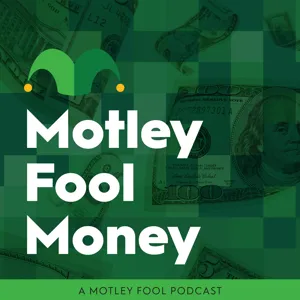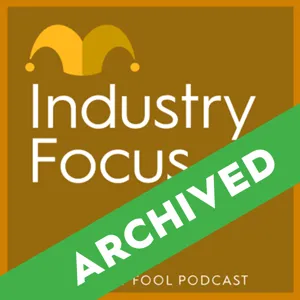Podcast Summary
Understanding a Company's Financials for Effective Communication: To effectively communicate about a business, grasp its financials by focusing on sales, subtracting cost of goods sold to find earnings, and recognizing the compounding effect on growth
Effective communication skills are essential in business and life, and the Think Fast, Talk Smart podcast, with over 43 million downloads and the number one career podcast in 95 plus countries, offers valuable insights from experts on harnessing these skills. John Ratcliff and Ari Hughes, in a Motley Fool segment, discuss the importance of understanding a company's financials to grasp its core business and growth potential. They use Starbucks as an example, explaining that sales are the starting point, and after subtracting cost of goods sold, earnings are generated. This compounding effect is crucial for business growth.
Understanding a Company's Financials through an Income Statement: An income statement reveals how a company generates revenue, manages costs, and calculates net income. Key metrics like sales growth, gross margin, operating margin, and net income provide insights into a company's financial health and profitability.
An income statement shows how a company generates revenue and manages its costs to produce net income. The process begins with the sale of a product or service, which is the top line of the income statement. The cost of producing that product or service, known as cost of goods sold, is then subtracted to determine gross profit. Operating expenses, such as salaries, rent, and utilities, are then subtracted from gross profit to determine earnings before interest and taxes (EBIT). Interest expense is next, followed by taxes, leaving net income as the final figure. Shareholders or owners receive the residual net income, making it the bottom line. When analyzing a new business, it's crucial to focus on key metrics and drivers that impact revenue and costs, such as sales growth, gross margin, operating margin, and net income. These metrics provide valuable insights into a company's financial health and profitability.
Understanding a company's financial health through management's perspective: The MD&A section in a company's 10-K document provides valuable insights into business metrics and trends from management's perspective, helping investors understand a company's financial health and revenue drivers.
The Management Discussion and Analysis (MD&A) section in a company's 10-K document is a crucial part of understanding a business's income statement and identifying its core drivers of revenue. This section allows investors to gain insights into the company's key business metrics and trends directly from management's perspective. For instance, in the case of Apple, the MD&A section provided information on the number of devices sold and their average selling prices. Moreover, the MD&A section offers valuable context and reasoning behind any trends or changes in the business, such as the impact of the holiday season or COVID-19 on Etsy's revenue. In the case of banks, the net interest margin is the key driver of value, which is the difference between the interest earned on loans and the interest paid on deposits. Overall, the MD&A section is where management discusses the metrics that add value to their business, and these metrics can vary across industries. Therefore, it's essential for investors to pay close attention to this section to gain a comprehensive understanding of a company's financial health and revenue drivers.
Ari's focus on KPIs for investment analysis: Ari prioritizes revenue growth, free cash flow, and a strong balance sheet for investment analysis, preferring businesses with organic growth, strong free cash flow generation, and immensely strong balance sheets.
Different industries call for different key performance indicators (KPIs) when analyzing businesses for investment. For instance, banks are evaluated based on their asset quality and profitability, while software companies are assessed using metrics like sales growth rates, gross margins, and free cash flow. However, when it comes to his personal analysis, Ari places the most emphasis on revenue growth, free cash flow, and a strong balance sheet. He looks for businesses with sustained revenue growth, ideally organic, and a team that has executed on acquisitions or has a proven track record in that area. Additionally, he prefers companies with strong free cash flow generation and immensely strong balance sheets, which are self-funding and don't rely on external financing for growth. These factors have historically been correlated with high stock returns.
Companies with high ROIC generate more cash flow: Businesses with high ROIC can reinvest less and still grow, leaving more cash for opportunities and higher value
Companies with higher return on invested capital (ROIC) have a competitive advantage in generating more free cash flow, which ultimately drives business value. This means they can reinvest less back into the business to achieve the same growth rate as a company with a lower ROIC, leaving more free cash flow available. ROIC is a crucial concept in understanding how businesses grow over time and the opportunities they have to continue doing so. In simple terms, a business produces cash, and the entrepreneur decides whether to reinvest that cash back into the business for growth. Companies with high ROIC can generate more cash flow, leading to more opportunities for growth and higher business value.
Companies with strong ROE and ROIC drive growth through reinvestment: Companies with high ROE and ROIC can expand and increase net income and operating income by reinvesting profits
Companies with high return on equity (ROE) and return on invested capital (ROIC) not only indicate strong profitability and performance, but they also serve as significant drivers of growth through reinvestment. The compounding effect of these returns, when reinvested, allows companies to expand and increase their net income and operating income over time. The ROE formula, which includes net income growth, is calculated as ROE multiplied by the reinvestment rate (1 minus the dividend payout rate). Similarly, the growth of operating income can be calculated using ROIC times the reinvestment rate. Therefore, these return metrics are crucial indicators of a company's ability to generate profits and fuel its own growth.




